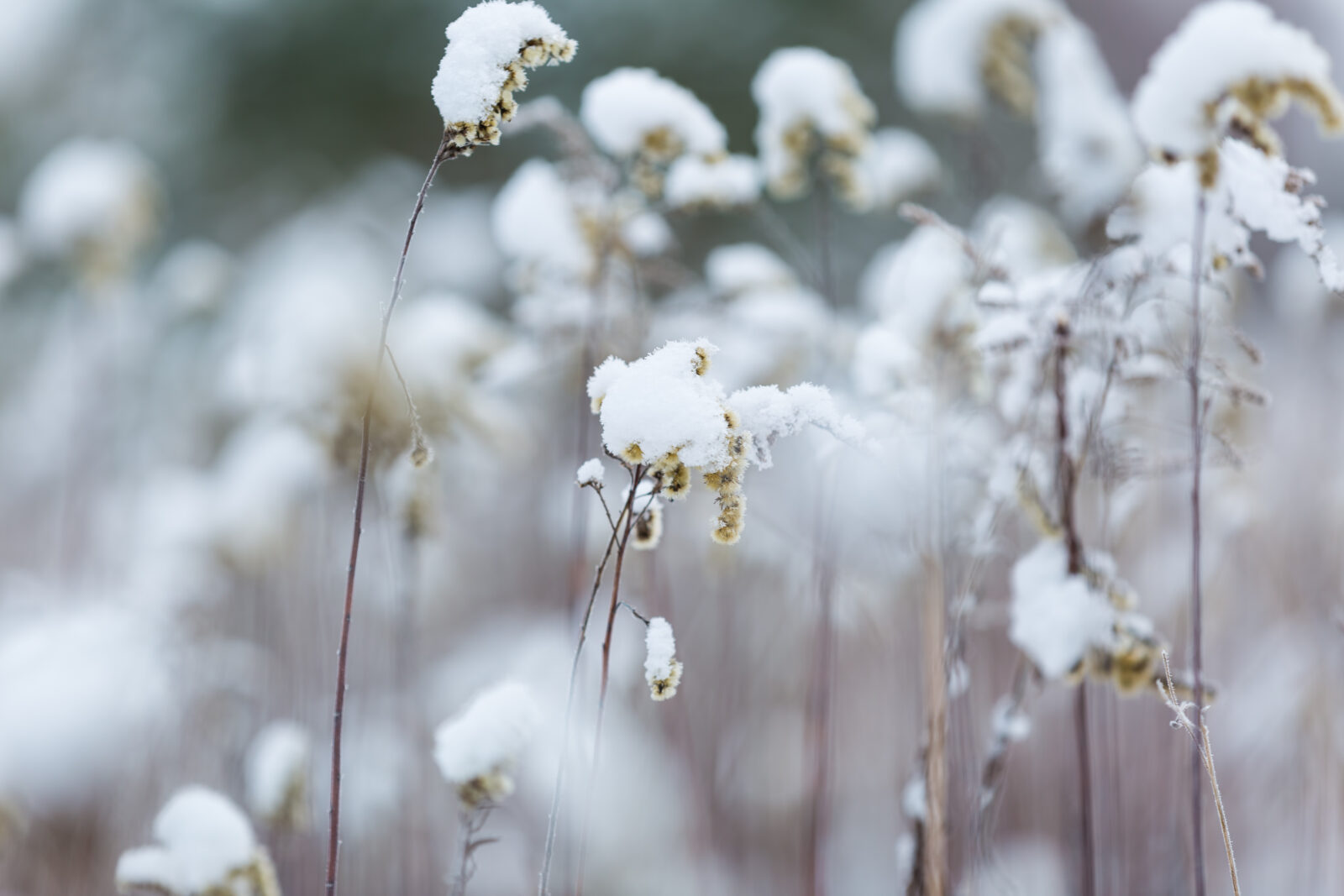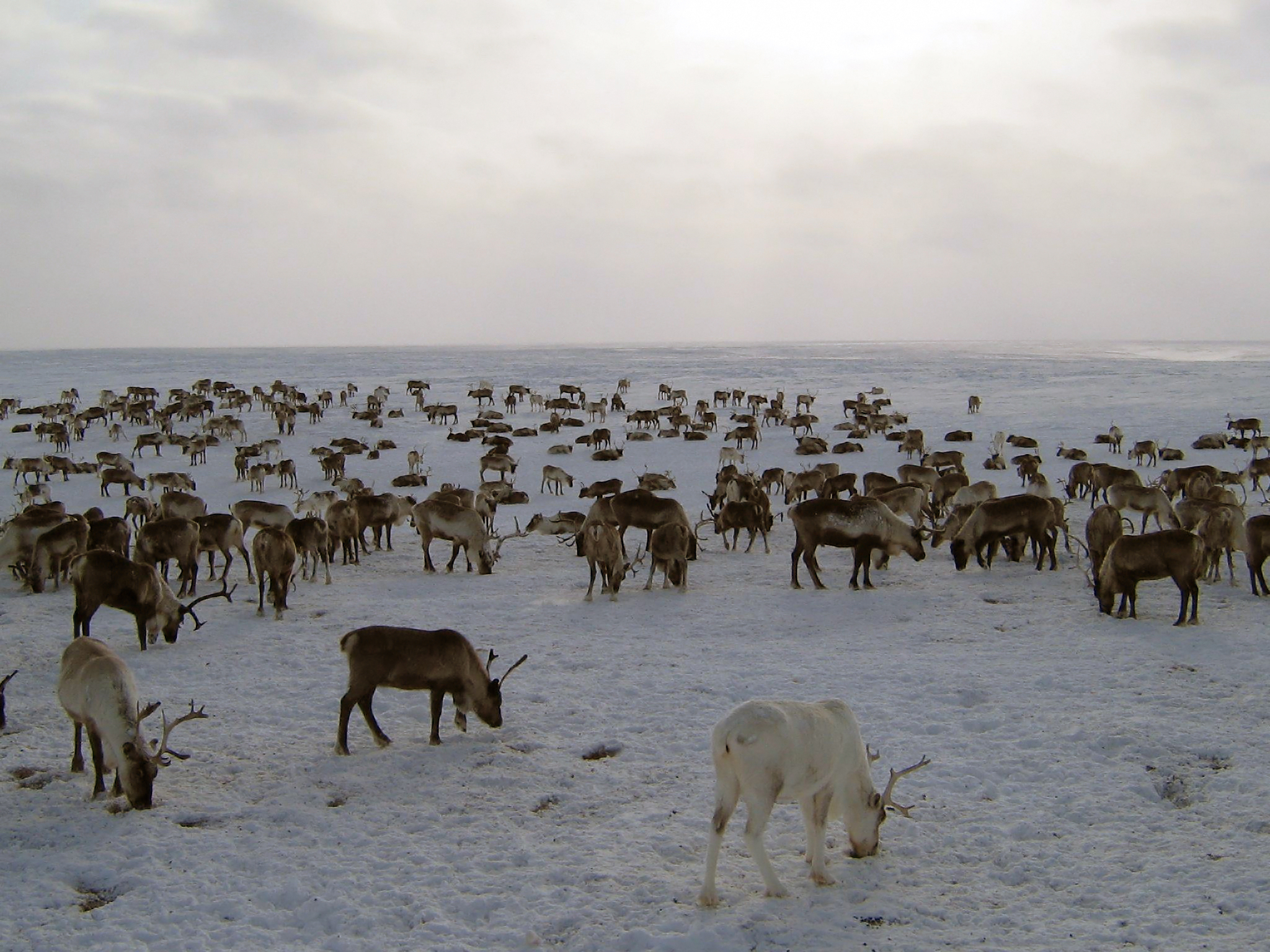Warming Winters and Climate Change 101
Victoria Whalen, ACE Fellow
|February 24, 2022

Plants under snow. Close up of withered goldenrod covered by snow in wintertime
Over the years, the cold season has become shorter and warmer. While some people might enjoy the warmer side of life, the consequences are far-reaching and have set in motion a chain of reactions that have large-scale negative impacts on our health, environment, and even business.
“Why is it still warm outside?”
A question we all can’t stop asking ourselves this time of year. If you have been paying attention to climate trends, you’ve probably noticed our winters have been progressively growing warmer by the year. Winters are warming faster than other seasons across much of the United States and while for some this may come as a welcome surprise, perhaps an opportunity to keep those winter coats and puffer jackets tucked away in the attic for another year, the reality is troubling.
“The cold seasons are warming faster than the warm seasons,” says Deke Arndt, chief of climate monitoring at the National Oceanic and Atmospheric Administration (NOAA)’s National Centers for Environmental Information. “The colder times of day are warming faster than warmer times of the day. And the colder places are warming faster than the warmer places.”
According to NOAA, January 2020 was the Earth’s hottest recorded January on average, compared with 141 years of temperature records. The four warmest Januaries have all occurred since 2016. In the Northeast, winter has warmed three times faster than summer in recent decades. “Those changes are big,” Arndt says. “We’re not just watching numbers. We’re watching changes in real people’s real lives.”

Impacts to Outdoor Job Sectors
One of the main impacts of warmer winters, especially in Northern regions, can be seen in the agricultural sector. Warmer temperatures in the winter can be devastating to crops and plants that require cooler weather before harvest — an important stage of crop growth that, if absent, can lead to less fruit production and weakened plants that are particularly susceptible to plague and pest infestation. This can also lead plants to fast-forward through their natural cycles, blooming too early — before the last freeze occurs and migrating pollinators arrive in the spring. Crop failure contributes to a lack of food supply, leading to food scarcity.
Warmer weather has also resulted in less snowfall, leading to a decline in the amount of snow covering North America and causing the snowpack — especially in the West — to melt weeks earlier than usual. The declining snowpack and earlier snowmelt reduce streamflow, affecting crucial freshwater supply for agricultural, residential, and commercial purposes. It also increases the potential for wildfires, resulting in drier conditions due to decreases in moisture.
Winter recreational activities – and the livelihoods of those employed to support them – also take a hit. Many communities in the North rely on winter tourism for income, which is increasingly in jeopardy due to climate change. For example, a terrible ice fishing season in winter 2019-20 on Lake Winnibigoshish reportedly led some anglers to give up on one of Minnesota’s premier walleye fisheries and seek better ice in North Dakota. The ski industry at large has been listed as one of the most vulnerable industries to climate change and can be expected to continue its trend of contraction and consolidation. For some resorts, the length of the skiing season will likely be cut in half by 2050, and across the country, warming winters will cost the industry more than $2 billion (Wobus et al. 2017).
Health Risks
Of course, we must talk about the health impacts of warmer winters – from respiratory issues to disease transmission. The incidence of Lyme disease, an illness transmitted by a bacterium found on deer ticks, has risen exponentially in the eastern United States (Wake et al. 2014) with reports of the disease in Maine rising from approximately 12 cases per year in the early 1990s to over 1,100 in 2012 (APHA 2015). Cases of another tick-borne disease, anaplasmosis, have also surged in the state to more than 680, up from just a single case in the early 2000s.
Then there are mosquitoes carrying vector-borne diseases. In general, cold winter temperatures kill mosquitos or slow down their reproductive cycles. “Warmer winters will result in, usually, earlier emergence of adult mosquitoes, for example, that bite us earlier in the springtime. It means that larger populations will survive throughout the winter,” says Duke University professor Bill Pan, who studies environmental change and disease.
Impacts of climate change also project a longer pollen season throughout much of the United States, posing a significant health risk to those suffering from allergies, respiratory impairments, and asthma (APHA 2015). Heat-related illnesses, including dehydration, heat exhaustion, and heat stroke, can also be expected to increase as exposure to extreme heat also increases across the country (Noe et al. 2013).

Ecological Impacts
Many species are adapted to cold weather and snow, and having fewer or no days below 32°F impacts them as well. Animals like the snowshoe hare, found in the boreal forests of Alaska, undergo a seasonal molt from brown in the summer to white in the winter to camouflage with their environment. But less snow in the winter is making them more visible to predators.
The warming of the polar regions has also created fragmented habitats for species that depend on the ice for survival, such as caribou and polar bears in the Arctic. In the Antarctic, melting ice is changing the distribution of penguin colonies and allows new plant species to establish in areas once covered in snow and ice year-round. Some bird species would cease migrating as far south as they once did, impacting other species of plants and insects that rely on these migrating birds to pollinate plants and keep pests under control.
This brings us to the next ecological impact: warming winters facilitate the survival and reproduction of invasive species and pests in traditionally colder climates. Problematic invasive species — like the Burmese python and the Brazilian pepper tree, for example — could spread further north, with warming temperatures expanding their range. Bark beetles have also devastated forests across the United States as temperatures have risen. In California alone, bark beetles (combined with years of drought) have killed off 129 million trees across the state. These dead trees pose a huge wildfire risk: They were one of the main reasons why the deadly Camp Fire, which torched the town of Paradise, CA in November, grew so quickly.
Want to read more? Check out the ACE Blog.
Join our Youth Action Network
More Blog Posts

Our Climate Wins Were on Display at the State of the Union
Today, the Biden Administration temporarily halted all pending decisions on 17 Liquefied “Natural” Gas (LNG) projects across the Gulf South.
Read More
ACE Honored As An Anthem Awards Finalist
Action for the Climate Emergency (ACE) announced today that it won Bronze in Best Use of AI at the 3rd …
Read More
BREAKING: Biden Halts LNG Export Expansion
Today, the Biden Administration temporarily halted all pending decisions on 17 Liquefied “Natural” Gas (LNG) projects across the Gulf South.
Read More